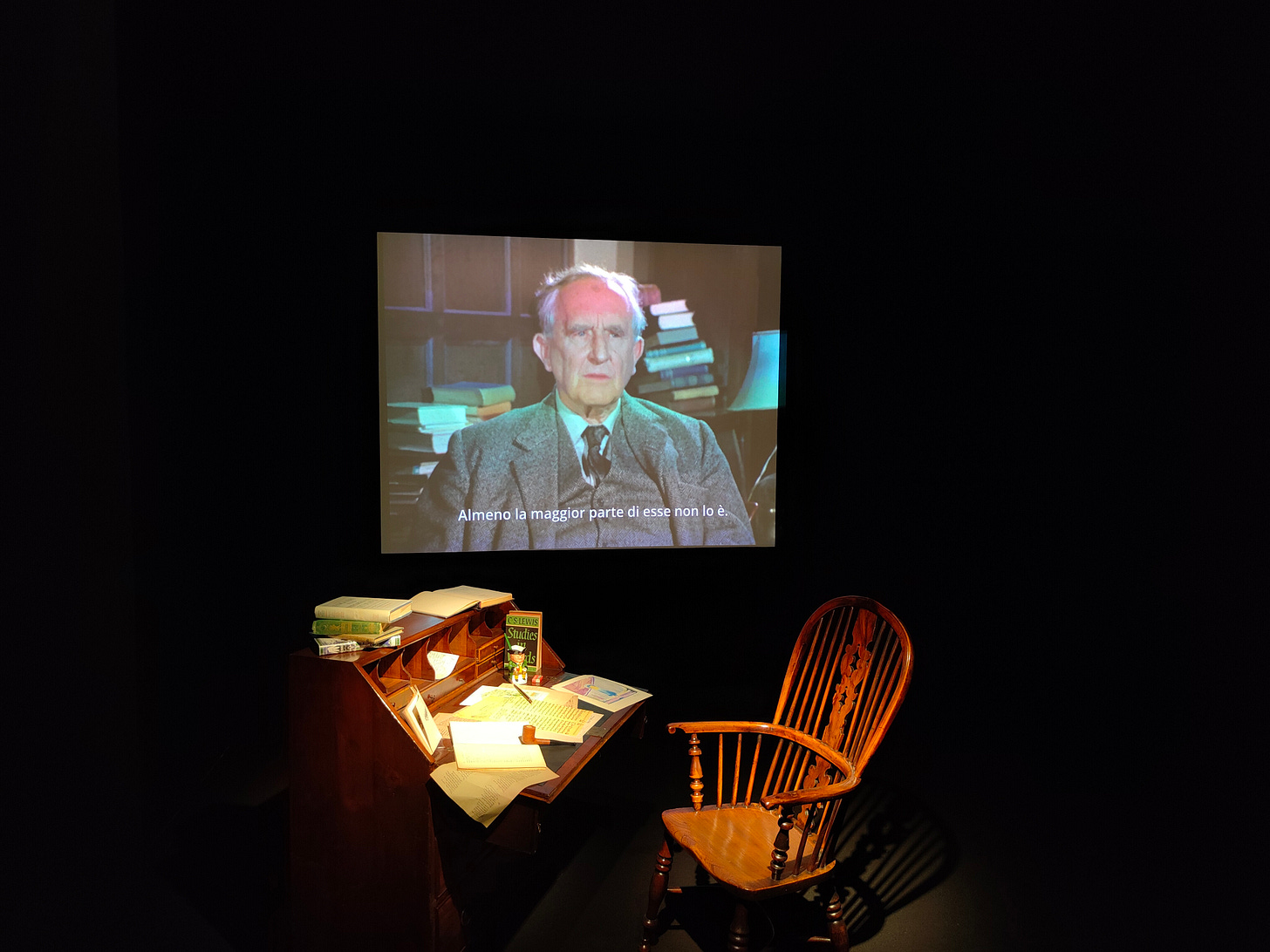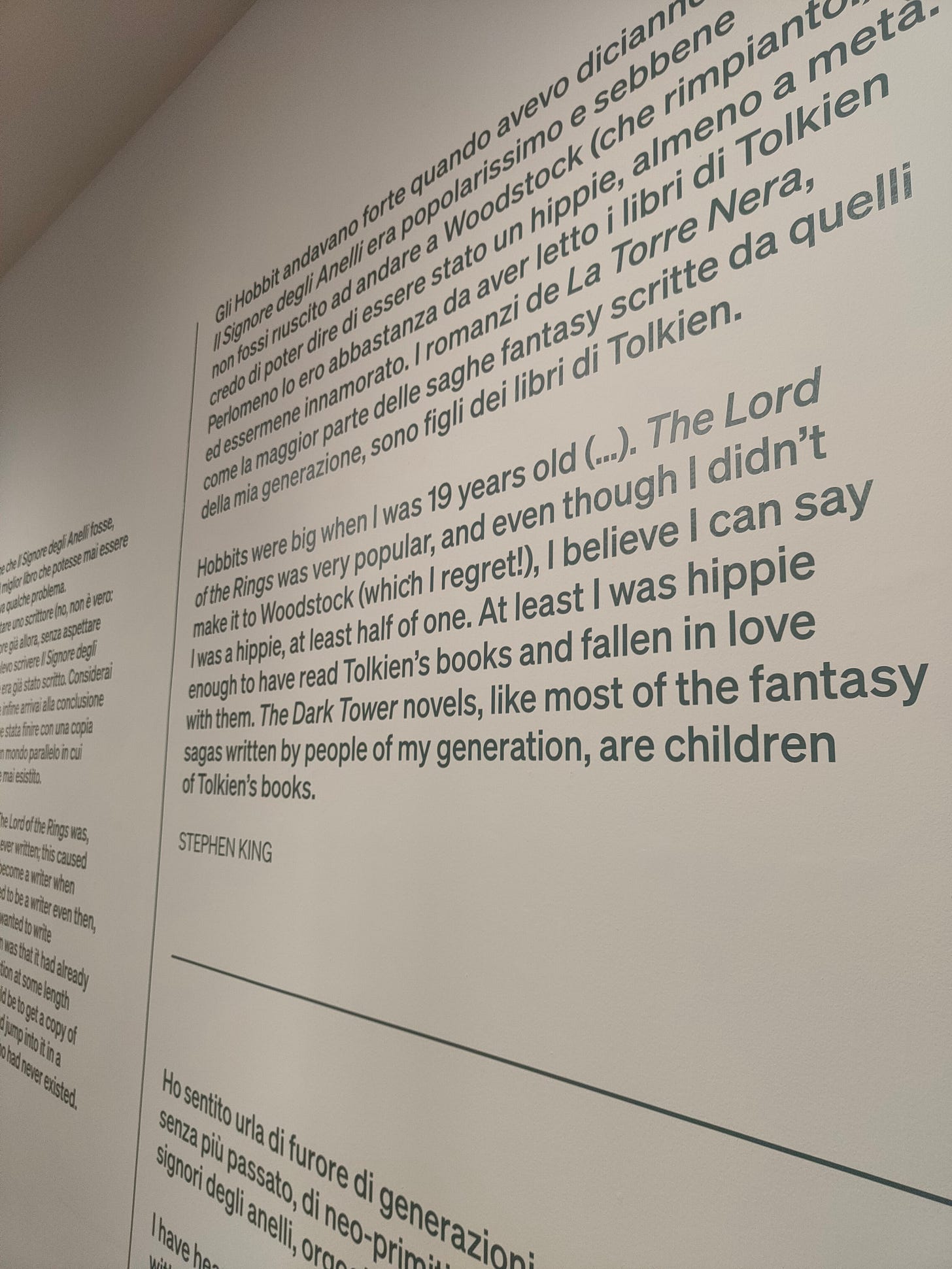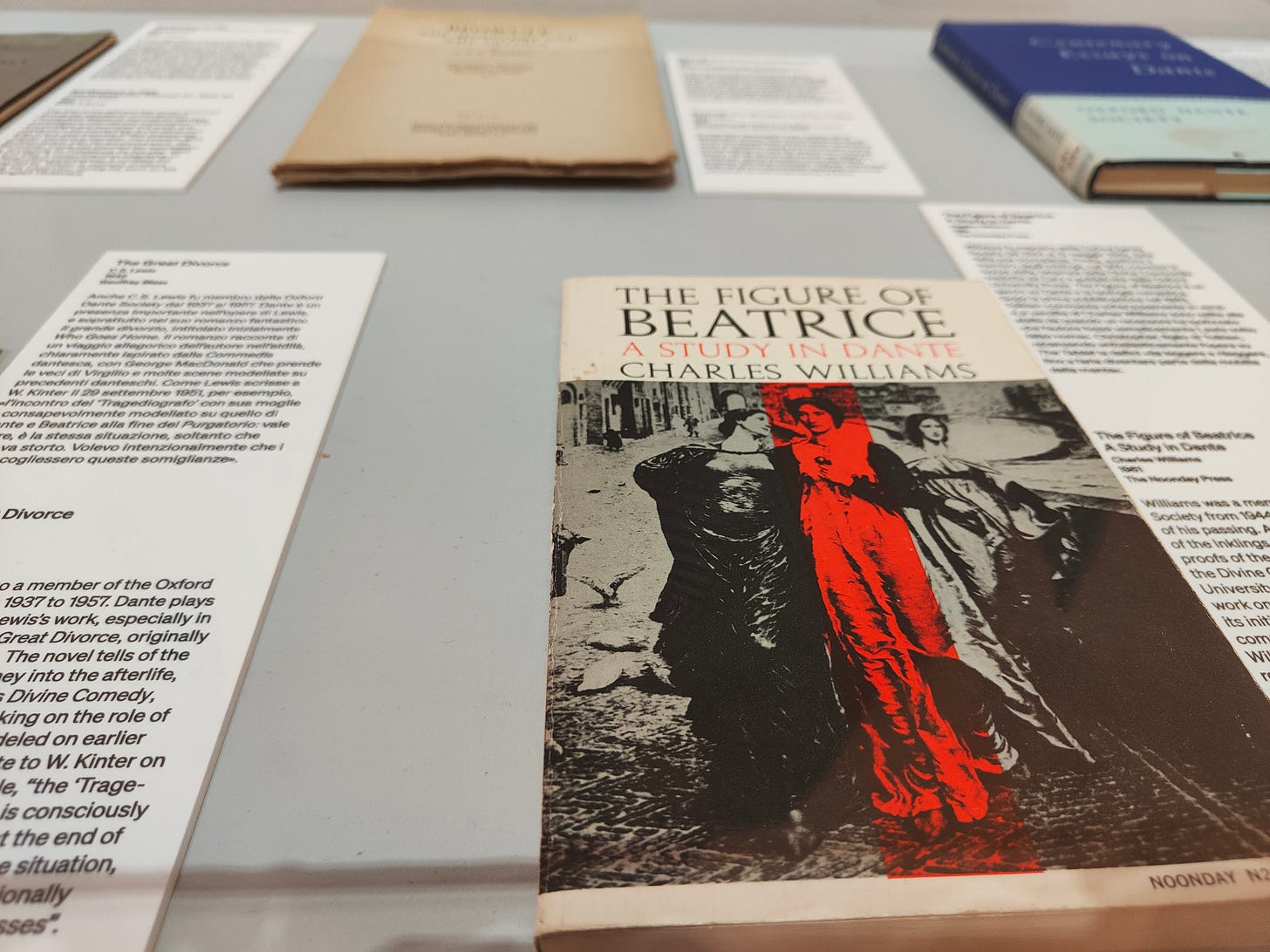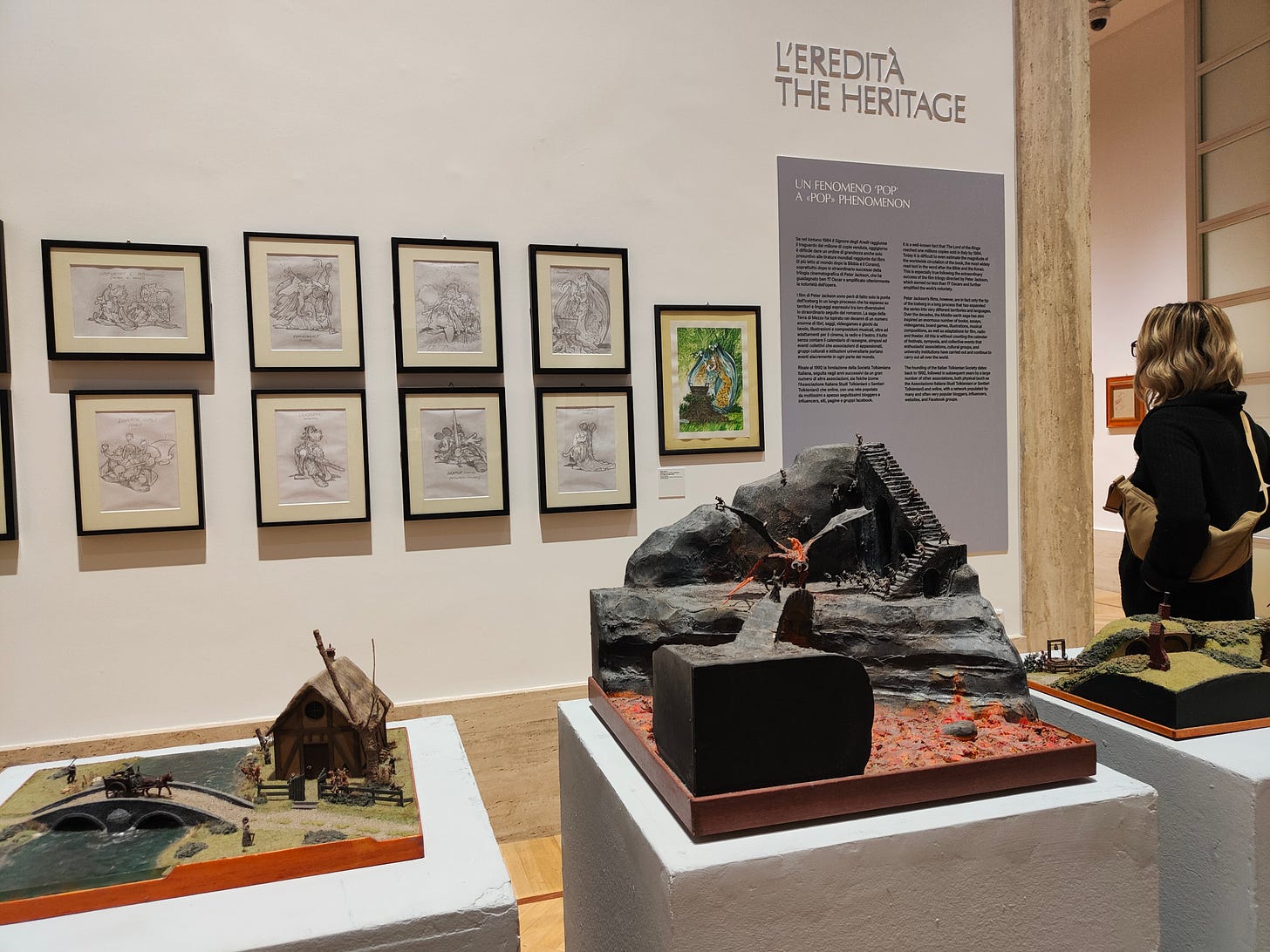Tolkien: Hobbit, Wizard, Scribe.
The exhibition Tolkien: Man, Professor, Author, ends its run at the GNAM in Rome on February 11, 2024. This is my review.

Visitors, upon entering the rooms dedicated to J. R. R. Tolkien at the National Gallery of Modern and Contemporary Art (GNAM) will be surprised to find themselves in some kind of pseudo academic environment, rather than in the fantasy playground of one man’s incredibly fertile yet very haunted mind. Venturing through the progression of rooms, each dedicated to a different aspect of Tolkien’s life, you get the impression there is something oddly conventional about the rows of glass display cases occupying room after room, or the posters and documents hung one next to the other on the gallery walls. Even the cooler pop-art, album covers and weird Hobbit costumes are placed here and there like in some garage sale. A bland exhibit indeed for one of the top contemporary art museums in Italy.
It is only when you reach the darkened alcove with Tolkien’s “original” desk, revering the act of writing itself, with notes, papers, and books strewn across the table’s surface, that you get this undeniable sense of a cult of personality. So the question becomes, is Tolkien really at the origins of a rightist ideology spreading its tentacles across Italy and beyond, or is the rightist movement grasping at anything in its reach to create an “origin” narrative of its own? Italy’s current ruling right wing party, the Fratelli d’Italia (FDI), and its party leader who is now the current head of state, Giorgia Meloni, have built an entire world of conservative youth camps and political retreats based on the fantasies of Middle-Earth. Now the fantasies have come true.

The curators of this exhibition, Alesssandro Nicosia and Oronzo Cilli, the former known for producing large commercial scale exhibitions, and the latter for his singular devotion to Tolkien literature, were anointed for this task by the Italian cultural Minister Gennaro Sangiuliano. The Minister, a former director of one of Italy’s national TV channels, TG1, promoted this show in a vainglorious effort to celebrate their party’s rise to power. As I can tell, there isn’t anyone involved in this exhibition that is particularly noted for their expertise in the arts, which may be why the show comes across as dryly as it does. The Hobbit can appeal to all sorts of audiences, from Christian extremists to flower-power counter-culture hippies. It is not surprising the Italian right can cherry pick whatever it wants out of Tolkien’s texts. I too read the Lord of the Rings, but I actually wasn’t swept away by its vision. My imagination had been won over by science fiction. I ended up preferring Isaac Asimov’s lessons on robots or Ray Bradbury’s bare metal rocket-ships. I lost out: Tolkien’s mystical otherworldly landscapes and battles with demons and dragons became the motherlode fantasy for generations of gamers.
The exhibition did, however give me a better sense of Tolkien’s sources. I wasn’t aware of his adventures during the First World War and his experiences on the battlefront, nor was I aware of the man’s deep devotion to Catholicism. The GNAM show makes an effort to shed light on Tolkien’s passion for the Italian language. The exhibition follows Tolkien to Venice and Assisi, places where the Oxford professor, accompanied by his daughter, made spiritual pilgrimages. Tolkien was also for a time a member of Oxford’s Dante Society. He had mixed feelings about the Divine Comedy, but there are unmistakable passages that seem to have crept into his own work, especially when treating the subject of dark forests.
Books, books, and more books, if you like, this obsession with Tolkien publications is really the unmistakable core concept behind this exhibition. They are everywhere, but nowhere more so than in this main gallery space, that has been transformed into a monumental shrine to Tolkien’s life’s oeuvre. When I first entered this hall of veneration, I thought the endless shelves were filled with empty book jackets, something you might be surprised to find when visiting a rich person’s home where shelves of fake cardboard books help create the semblance of great intellectual capacity. Instead, in Tolkien: Man, Professor, Author, the books here are actually real, and represent a vast selection of international editions from all over the planet. This assembly of Babylonian proportion, is truly impressive, many of the book covers are gorgeous works of graphic art in their own right.

So can the diviners of the future visit this show expecting to take away some enticing clues about what a right wing Italian culture might one day look like? More book shelves? More reverence of white Christian men? Or will Italy gradually become Middle earth, whatever that means? Would I one day be given the chance to remake Tolkien: Man, Professor, Author, on some future date and at some location far from the political pull of Rome, I would take a different approach altogether to the subject. To begin with, I would change the title: Hobbit, Wizard, Scribe, and I would definitely leave J. R. R. Tolkien out of it.





